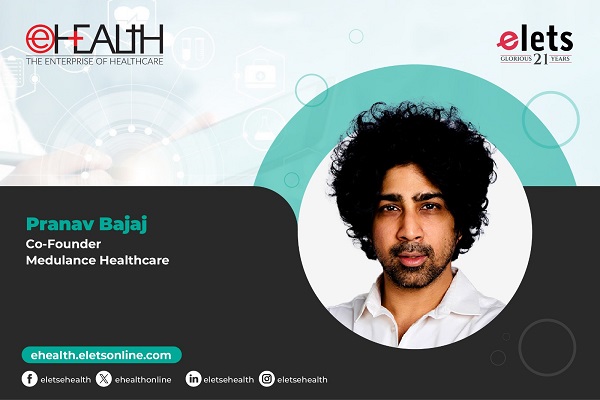
The most important aspect of our NMD (National Medical Devices) Policy 2023 is the patient-centric approach. The Policy aims to build an innovative and globally competitive industry in India, supported by worldclass infrastructure in alignment with PM Gati Shakti, Make in India, and Atmanirbhar Bharat programs. The goal is to become a global leader in the manufacturing and innovation of medical devices by increasing our market share in the global market from the current 1.5 per cent to 10-12 per cent in the next 25 years.
This is a huge step forward considering the lack of access to homegrown medical devices noticed at the onset of Covid 19 in 2020, which led to severe lockdowns and critical healthcare insecurity exposed. Regretfully the government is now being misled by some administrators and India recently slid back by two steps from achieving these global ambitions.

Firstly, by recently allowing the import of preowned medical equipment and the re-manufacturing or refurbishing of medical imaging systems and other medical electronic equipment, there is an increased risk of importing contaminated products into the country. This action could have a detrimental effect on the manufacturing and innovation of medical devices in India, potentially slowing down investments in the sector and discouraging domestic manufacturers.
We must understand the motives of MNCs who want to dump their obsolete and old equipment in India, as this used equipment have no market in their own countries. They are replacing them with new products and new technology. We should also understand why these preowned products are not allowed in China, Vietnam, Thailand, Indonesia, etc.
This is an attempt to mislead Indian policymakers and derail them from PM Gati Shakti, Make in India, and Atmanirbhar Bharat programs by allowing these substandard products in India and it confuses investors as they will not be able to compete commercially with these low-priced imports.

Should India be importing preowned equipment under the banner of affordable access, when clinics don’t necessarily pass on equipment age-related discounts to patients? Or would patients benefit more in the long term if the country pursued investments to promote domestic manufacturing (“Make in India”)?
Patient safety can be significantly compromised when exposed to obsolete technology, lacking proper calibration and validated performance, and relying on makeshift maintenance solutions. This policy requires a thorough review and a potential rollback. It would be more beneficial for India and its consumers if the country invests in the “Make in India” initiative.
Who is confusing the Government?
The Industry Promotion Body, known as FICCI, has allowed its medical devices division to be misused by overseas manufacturers. This misuse involves enticing policymakers with the promise of affordable patient access, all the while aiming to bolster their replacement market abroad. This scheme results in the dumping of nearly obsolete equipment in India, effectively generating profit twice. Unfortunately, this practice undermines the growth of emerging domestic competition, which has made significant recent investments in medical electronic device manufacturing.
One Step Forward, Two Steps Back
Taking a step backward, the government plans to introduce a new bill on drugs, cosmetics, and devices to parliament during this monsoon session. The intended aim is to enhance patient safety. Regrettably, this opportunity to establish progressive and modern regulations aligned with the latest international standards is being squandered due to a flawed bill and a flawed process. The bill was drafted without adhering to proper democratic pre-legislative procedures and continues to propose regulating devices alongside drugs. Instead, there could have been a chance to enact a progressive and modern standalone law to address patient safety needs, similar to the systems in Canada, the UK, EU, Brazil, Japan, and Saudi Arabia.
Even more concerning, the bill has revised the definition of a manufacturer, potentially allowing marketing companies to be classified and licensed as manufacturers. Additionally, it seeks to legalise pseudo-manufacturing, opening the door to potential low quality, cheaper imports that might jeopardize patient safety. Unfortunately, this approach discourages investments in domestic manufacturing by treating genuine manufacturers as potential wrongdoers, while foreign manufacturers are not held to the same rigorous standards to demonstrate conformity.
The true beneficiaries would be patients if healthy competition were fostered among various domestic manufacturers. To achieve this, investment and entrepreneurship in medical device manufacturing must be actively encouraged. Engineers and scientists who innovate and design products should be able to do so confidently through well-defined regulatory pathways. Similarly, manufacturers should adhere to disciplined and compliant regulatory conformity requirements. They should demonstrate conformity through third party certification or testing carried out by accredited certification bodies and laboratories.
Regulatory bodies and organisations like QCI’s NABCB (National Accreditation Board of Certification Bodies) should collaboratively oversee the performance of these certification bodies and laboratories. This supervision aims to ensure competent staff with relevant expertise conduct audits on manufacturers, fostering continuous improvement in quality management systems and product performance. It’s time for India to move beyond an “Inspector Raj” mentality, where inspectors possess extensive powers, including search and seizure, even for licensed manufacturers. Treating these manufacturers as criminals and threatening imprisonment for minor offenses is counterproductive.
Laws should be reasonable, feasible, and adaptable to the needs of a progressive and aspiring nation. Medical electronic devices, akin to engineering products like cars, cannot be manufactured or regulated in the same manner as drugs. They require proper storage, transportation, installation, maintenance, and regular calibration throughout their lifecycle to ensure patient safety. Users must receive adequate training to safely and appropriately utilise medical devices, sharing responsibility for their correct usage.
Drawing an analogy, constructing world-class expressways designed for speeds exceeding 120 km/h while imposing a speed limit of 60 km/h and penalising the majority for infractions is illogical. Instead, fostering strong discipline would enable the pursuit of safer higher speed limits until the confidence to entrust drivers, similar to the German system, is achieved.
In this scenario, there might not even be an upper-speed limit, only a minimal limit on expressways. Robust post-market surveillance is crucial to monitor the medical devices marketplace, ensuring effective regulatory functioning. In case of adverse events, rather than pursuing witch hunts, regulators should seek systemic preventive and corrective measures to bolster patient safety.
Views expressed by Rajiv Nath, Forum Coordinator, Association of Indian Medical Device Industry
Be a part of Elets Collaborative Initiatives. Join Us for Upcoming Events and explore business opportunities. Like us on Facebook , connect with us on LinkedIn and follow us on Twitter , Instagram.












